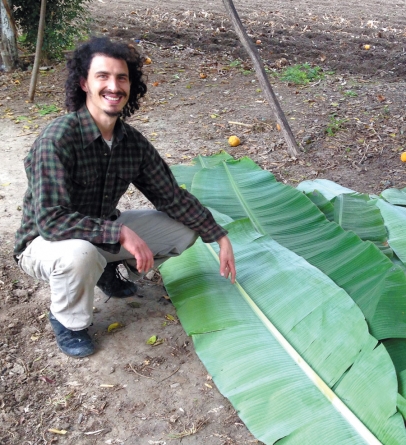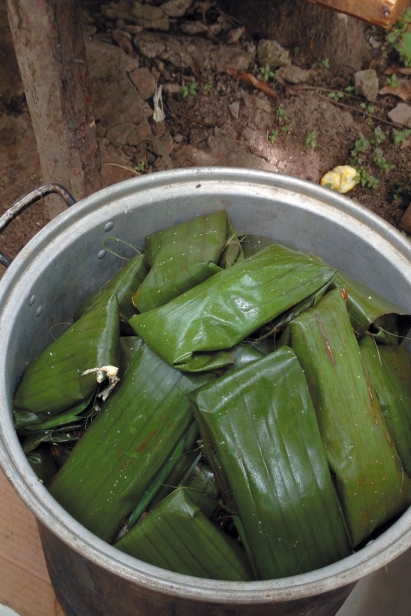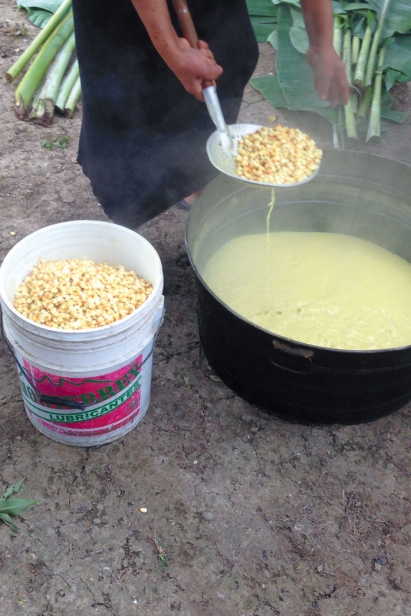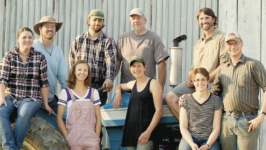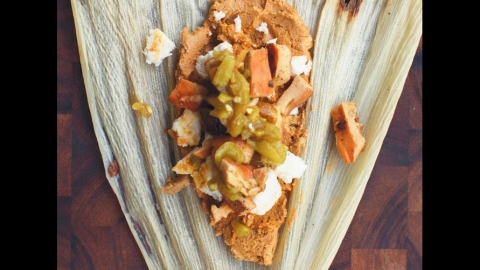Shagbark Seed & Mill and the Culture of Corn
Shagbark Seed and Mill’s journey to make tortillas and tamales
“The reason these traditional foods are so important is that they tie the crop to the cuisine, and traditional cuisine is such because it developed around crop rotations, seasonality, and viewing food as medicine, a delicious medicine,” says Michelle Ajamian, co-owner of Shagbark Seed & Mill Co. with Brandon Jaeger in Athens, Ohio. We’re all cooling off at Casa Nueva, waiting for tacos made with Michelle and Brandon’s new line of corn tortillas, created from the same Ohio-grown certified organic corn that is the backbone of the famous Shagbark corn chip.
Shagbark currently has 140 acres of certified organic crop in production in Ohio, most of which will yield 280,000 pounds of corn this year (along with pinto and black beans, buckwheat, spelt, and heirloom popcorn). According to Michelle, while there are 80 million acres of corn being grown in the United States, only 2% of that acreage is organic. Michelle and Brandon’s business make up a nice piece of the Midwest pie of organic corn production.
So it’s with much love and rigor that Michelle and Brandon recently turned their attention to making corn tortillas available to their Ohio market. And it’s a partnership of passion with another local business. The tortillas would not be possible without Koki’s Tortillas on East Sullivant Avenue. Michelle knew she wanted a producer who was as close to the source of tortilla production as possible. Koki’s is run by the Paz family, namely Aveleno, who came from Mexico to America at the age of 16 and traveled all over the country—California, Texas, Michigan, and Florida—learning the trade of tortillas before landing in Columbus.
“It’s about peasant food,” Michelle says as we talk about the kind of tortillas Shagbark and Koki’s produce. She tells me the story of Chef Thomas Smith at The Worthington Inn and how he handed one of Shagbark’s tortillas to his line cook. The cook took the tortilla in hand, held it up to his nose, breathed deeply the scent of the soft circle, and with eyes aglow, indicative of a longing for his land and people, said, “MEXICO!”
The flavor of the tortillas affirms this timeless craving. The tacos at Casa are hearty, nourishing, and grounding. They’re the kind of tacos I could eat every day as a staple, and not simply because of Casa’s culinary coolness—it’s the stamp of Shagbark’s corn.
And this brings us to why these traditional foods, made the traditional way, are so important—they keep us healthy.
Authentic corn tortillas are made with masa, corn that is soaked in water and rock lime, a process known as nixtamalization. “It’s an extreme alkalinity of lime,” says Brandon, “that unlocks the niacin, which is otherwise unavailable and a difficult-to-get nutrient. It also makes the corn more digestible.” Shagbark tortillas and tortilla chips are made from corn that’s 100% nixtamalized.
Corn has a long history of being brought from America to communities around the world without transferring the “culture with the crop.” Michelle talks of peasants in Italy who, when corn was brought to the region, were given corn to live on, which they ground into polenta. Living on polenta led to “maize sickness,” even death, because the unprocessed corn created a niacin deficiency in them—a disease known as pellagra. There are stories, too, of how people in the South after the Civil War got sick and died trying to survive on grits. In both cases, people skipped the step of soaking the corn—the nixtamalization process—and went right to eating unprocessed ground corn.
To fully understand this necessary process, and the culture from which it was born, Brandon and Michelle traveled to El Naranjo, Mexico, to visit the Paz family and make tamales and tortillas with them.
“We could tell that the Paz family was appreciative because we were interested in all aspects of their food traditions. At home, we eat tortillas and beans every day. We love that food,” says Michelle.
After a four-and-a-half-hour bus ride through the mountains of Mexico, Michele and Brandon arrived at the Paz family residence. Aveleno’s sisters led the process of cooking the masa, and the whole family participated in spreading the dough over cornhusks and banana leaves, so the tamales could be cooked over a backyard fire.
Michelle and Brandon visited the river with Aveleno where they imagined native people long ago washed their corn, and looking down through its depths witnessed a blue-green color in the water they’d never seen before.
Aveleno said, “Brandon, do you see the color of the water?” Michelle smiles as she remembers how child-like he was, encouraging Brandon to take it all in, and Brandon talks of how the water was rich with the lime from the limestone in that region.
“I’d love to go there for weeks,” says Michelle, and they’ll most likely return soon to learn more about the process of tortillas and tamales and the culture of corn.
For now, we get the benefit of their journey in Shagbark’s corn tortillas found at local, independent restaurants like Skillet, Acre, The Worthington Inn, and, in Athens, Casa Nueva and Sol, and soon to be sold in markets throughout Central Ohio.
And we also get Michelle’s recipe for tamales—some summertime fun for the soul.


